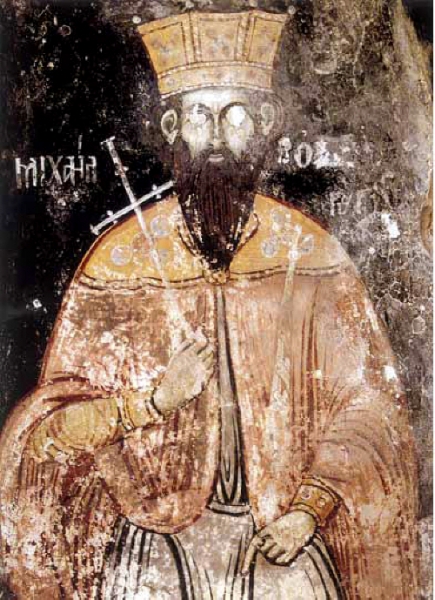If we talk about the Glagolitic alphabet, it is unique. It is reminiscent more of the Ethiopian, Armenian and Georgian writing systems. These are the writing systems of the Byzantine periphery. On the other hand, the Glagolitic alphabet was in synchrony with what was happening in Constantinople after the established worship of icons and the replacement of the majuscule with the minuscule writing system. Despite these similarities with other systems, it remains unique and perfect, as I have already stated. If we talk about its closeness with the Greek writing system, we should turn to the Cyrillic alphabet, which was adapted on the basis of the Greek uncial writing system, which was well known in the Bulgarian lands, as shown by the epigraphy. Chernorizets Hrabar, a Bulgarian writer of the 10
th century, wrote that the Bulgarians had been writing in Greek or Latin letters for a long time, but "without structure", without improvement, without specific written characters of the typical sounds of the Slavic language. The Greek letters used were uncial and this had created written stereotypes leading to the creation of the Cyrillic alphabet. This alphabet repeated the Greek typefaces of the letters and added written signs for the Slavic sounds – б (be), ч (che), ц (tse), дз (dze), щ (sht), ж (zhe).
Why do you think the two Byzantine missionaries created a work that hit the Byzantine Empire at its core?
I would not be so categorical. Yes, Byzantium had created a weapon of cultural assimilation which, at one point, had turned against it because the Bulgarian rulers, who had had their own political ambitions and confidence, had stood behind the alphabet. They had used the alphabet to consolidate the Bulgarian state in the Christian culture but also to distinguish it from the Byzantine Empire, from its eternal rival. Years ago, when I was preparing a collection of articles in Bulgarian by Peter Schreiner, a world famous Professor of Byzantine Studies and president of the International Association of Byzantine Studies until 2011, he defined the relations between Bulgaria and Byzantium as diverse and rival, which became the title of the book. I find it very successful.
 How was the autocephalous church created only five years after Christianity became the official religion in Bulgaria? Why did the Byzantine clergy allow this to happen?
How was the autocephalous church created only five years after Christianity became the official religion in Bulgaria? Why did the Byzantine clergy allow this to happen?
One of the conditions set by Boris in the adoption of Christianity from Constantinople was the Bulgarians' right to have an autonomous, independent church. I am convinced that this fact had tilted the scales of all thoughts and doubts of the Bulgarian ruler in favour of Constantinople. He was a khan but also a high priest and all secular and spiritual power was in his hands. He would not sacrifice power and therefore he preferred the model that would allow him to control the spiritual authority, namely an independent church, and resorted to Caesaropapism under which the secular government is superior to the spiritual authority. Otherwise, the creation of the autocephalous church was a continuous process. Byzantium did not yield so easily. Ultimately, while King Peter was in power, we already had a patriarch. Apparently, the shadow of his belligerent father, Simeon, had long been disturbing the peaceful sleep of the Byzantine Emperor. Institution building is a difficult process. It seems that the establishment of the Bulgarian church performing the liturgy in a clear language for the people was equally important for Boris - Michael and Simeon. This was their primary task. And again we come to the work of Cyril and Methodius and I would like to conclude with a quote from the Prologue to the Gospels, a poetical work by Cyril, one of the finest works of Old Bulgarian literature:
"Stripped are the nations without books Powerless to fight the enemy of their souls....".